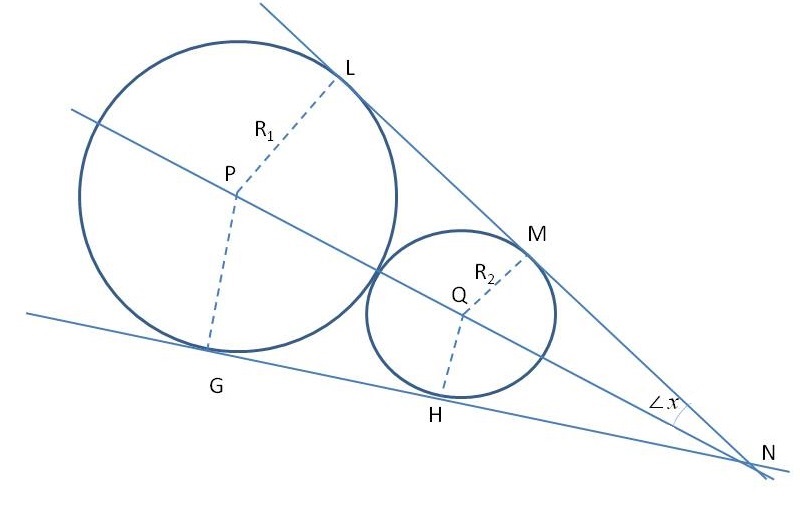Let us have the two circles centered at #P# and #Q#, with radius #R_1# and #R_2# respectively.
Let the two tangents be #LMN# and #GHN#, where #L,M,G,H# are the points at which they touch the circles as shown and #N# is the point at which they intersect each other.
The line joining #PQ# will also pass through #N#. Now join points of contact of tangents #L,M,G,H# with the respective centers of the circles as shown. Let #m/_LNG=2x#, then #m/_LNP=x#.

Now #DeltasLNP# and #MNQ# are right angles and hence
#R_1=PNsinx# .....................(A)
and #R_2=QNsinx# .....................(B)
Subtracting (B) from (A), we get
#R_1-R_2=(PN-QN)sinx#
or #sinx=(R_1-R_2)/(PQ)=(R_1-R_2)/(R_1+R_2)#
or #1/sinx=(R_1+R_2)/(R_1-R_2)#
Applying componendo and dividendo
#(1+sinx)/(1-sinx)=(R_1+R_2+R_1-R_2)/(R_1+R_2-R_1+R_2)#
#(1+sinx)/(1-sinx)=(2R_1)/(2R_2)#
or #R_2/R_1=(1-sinx)/(1+sinx)#

